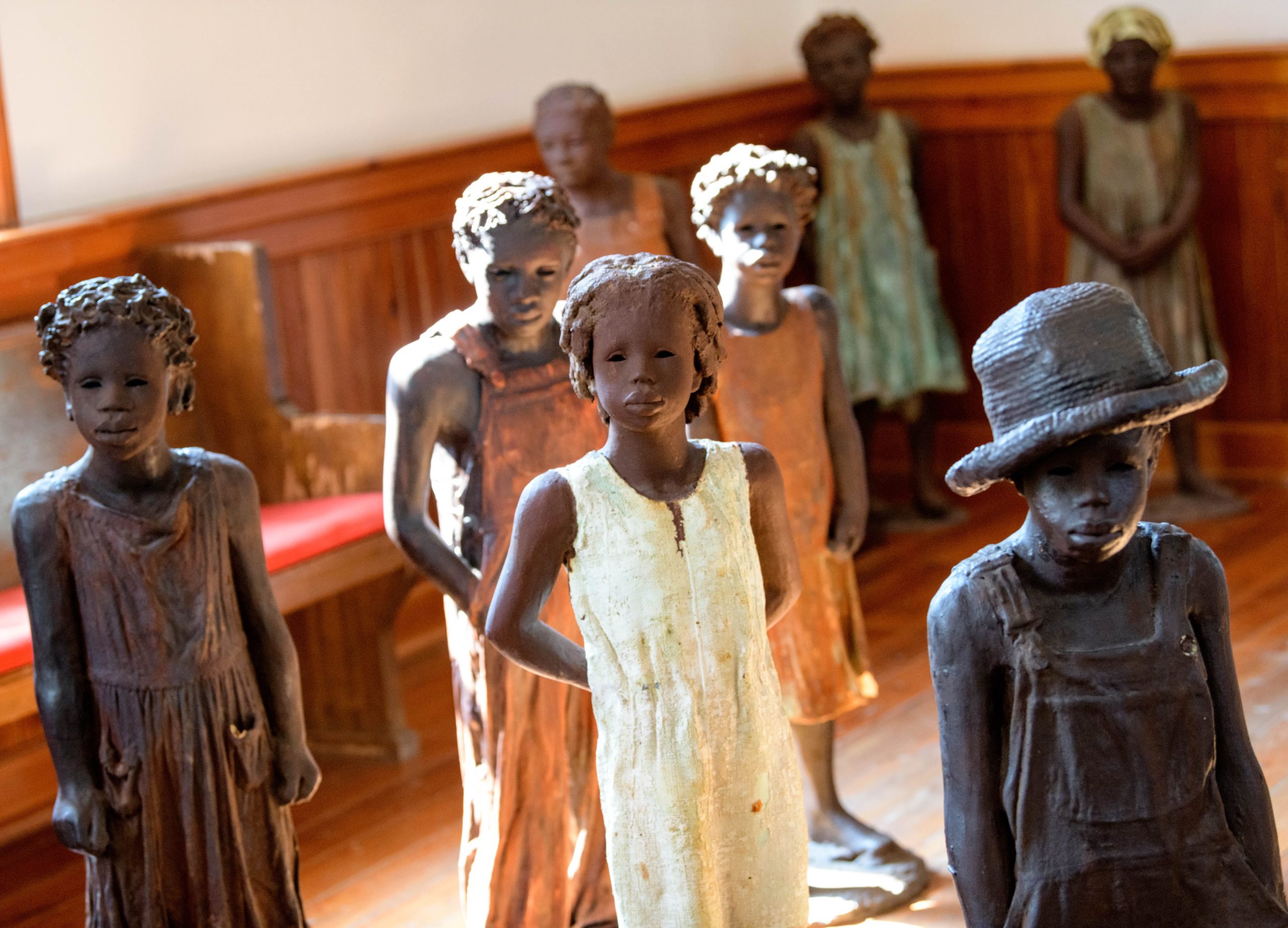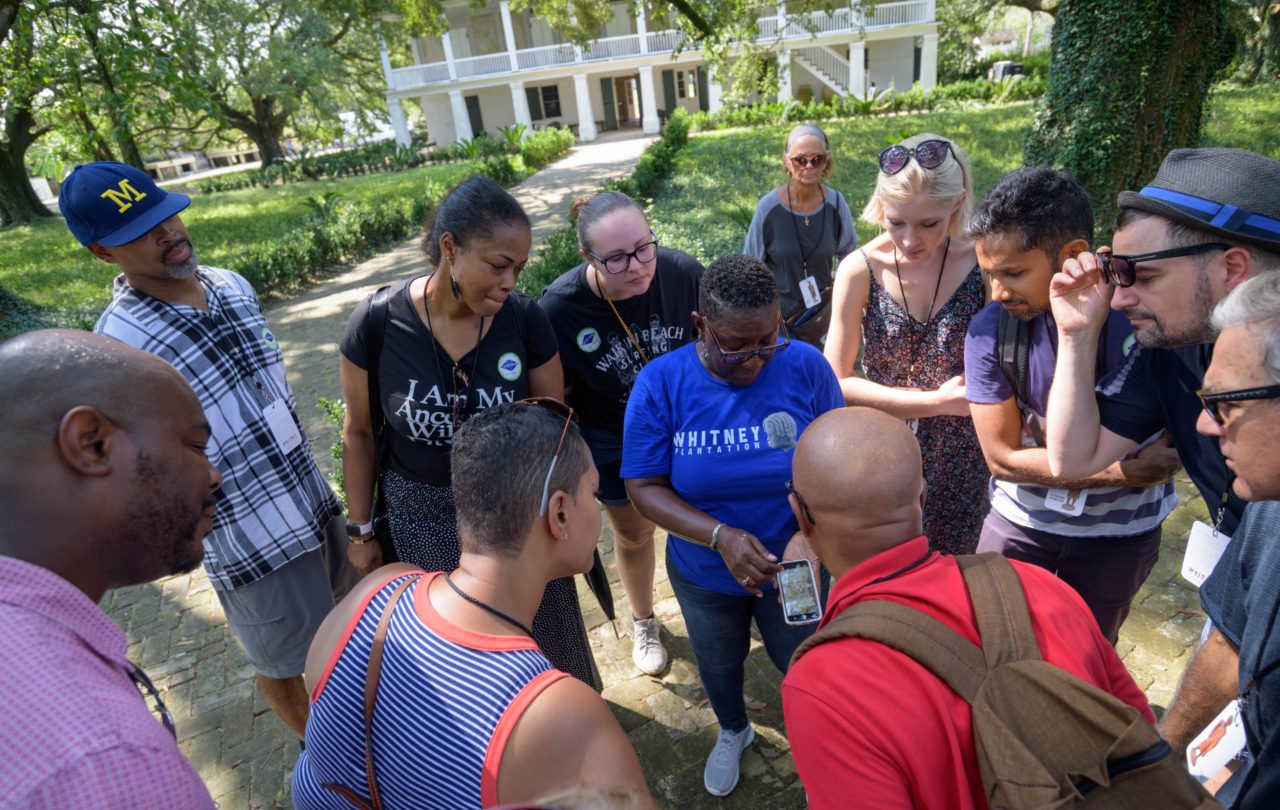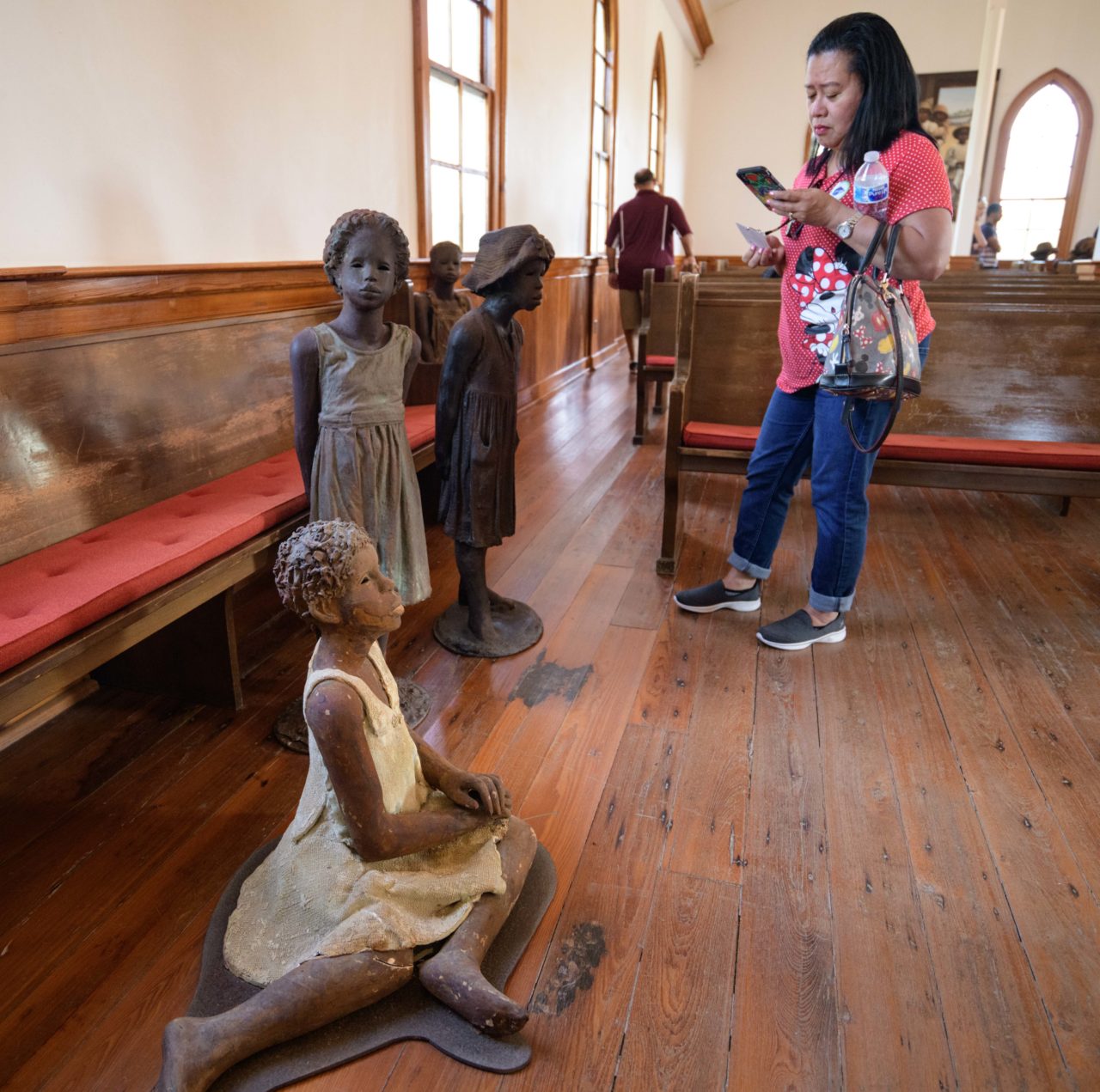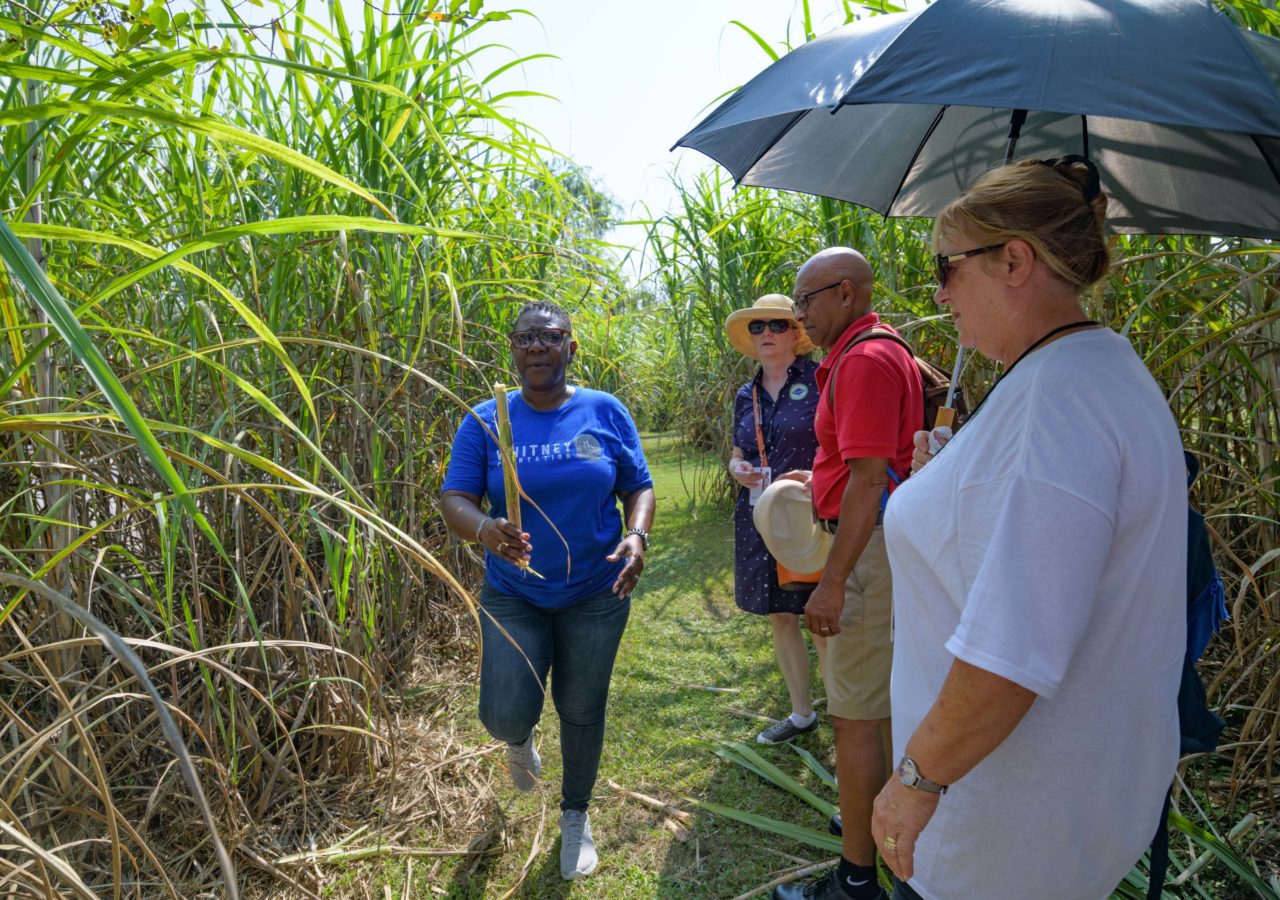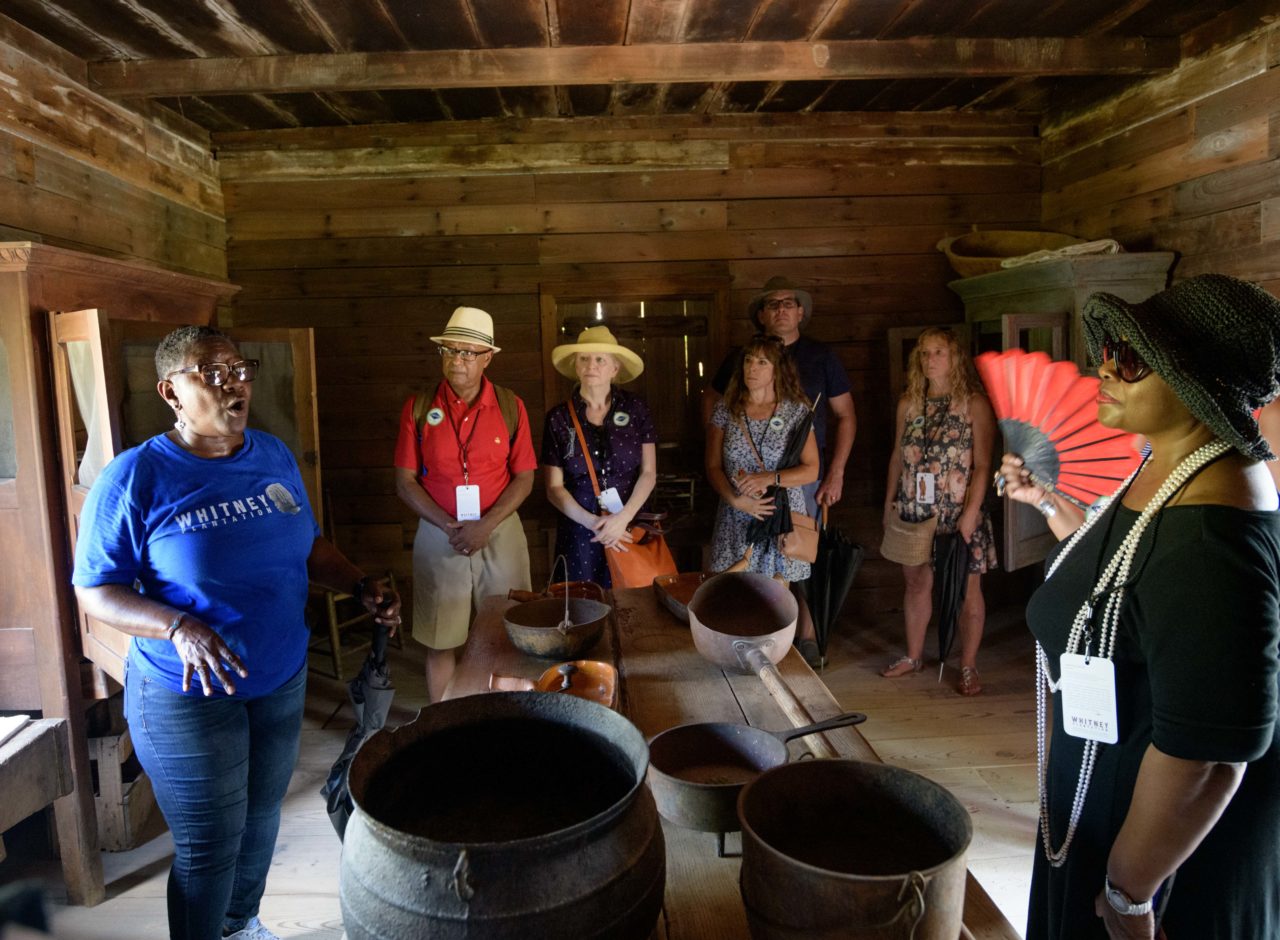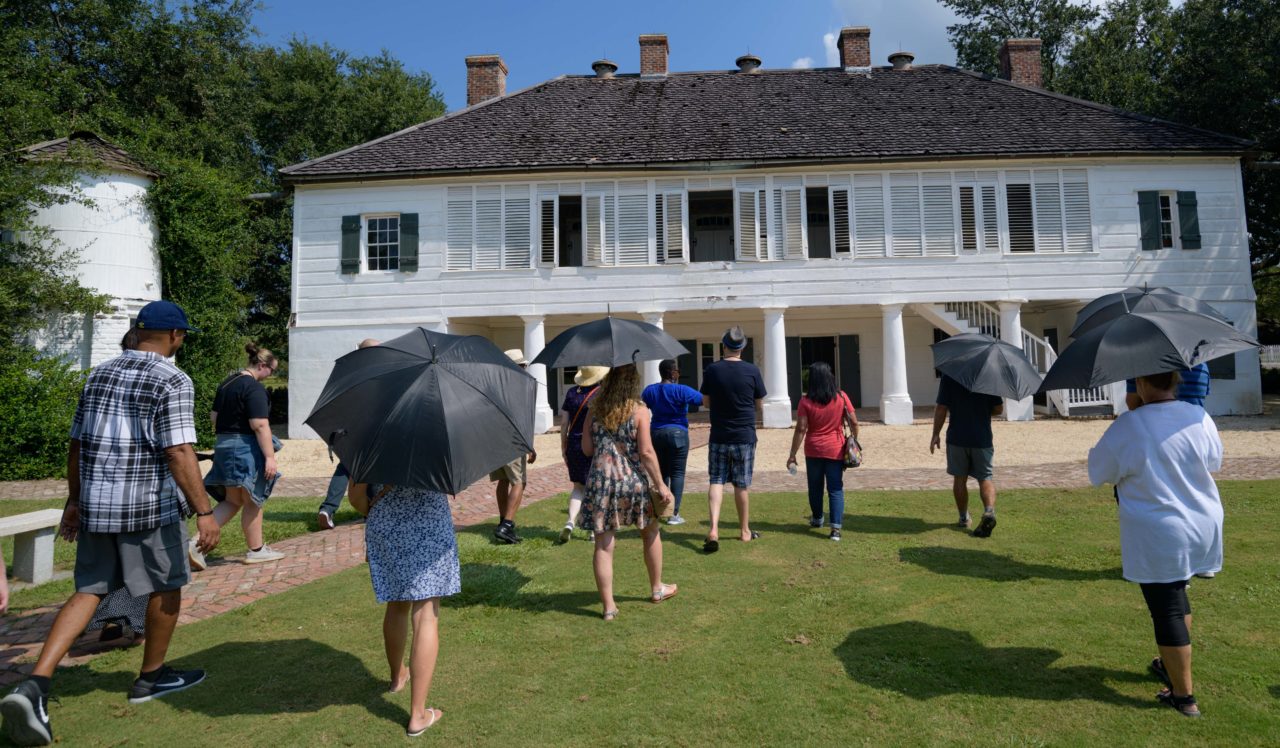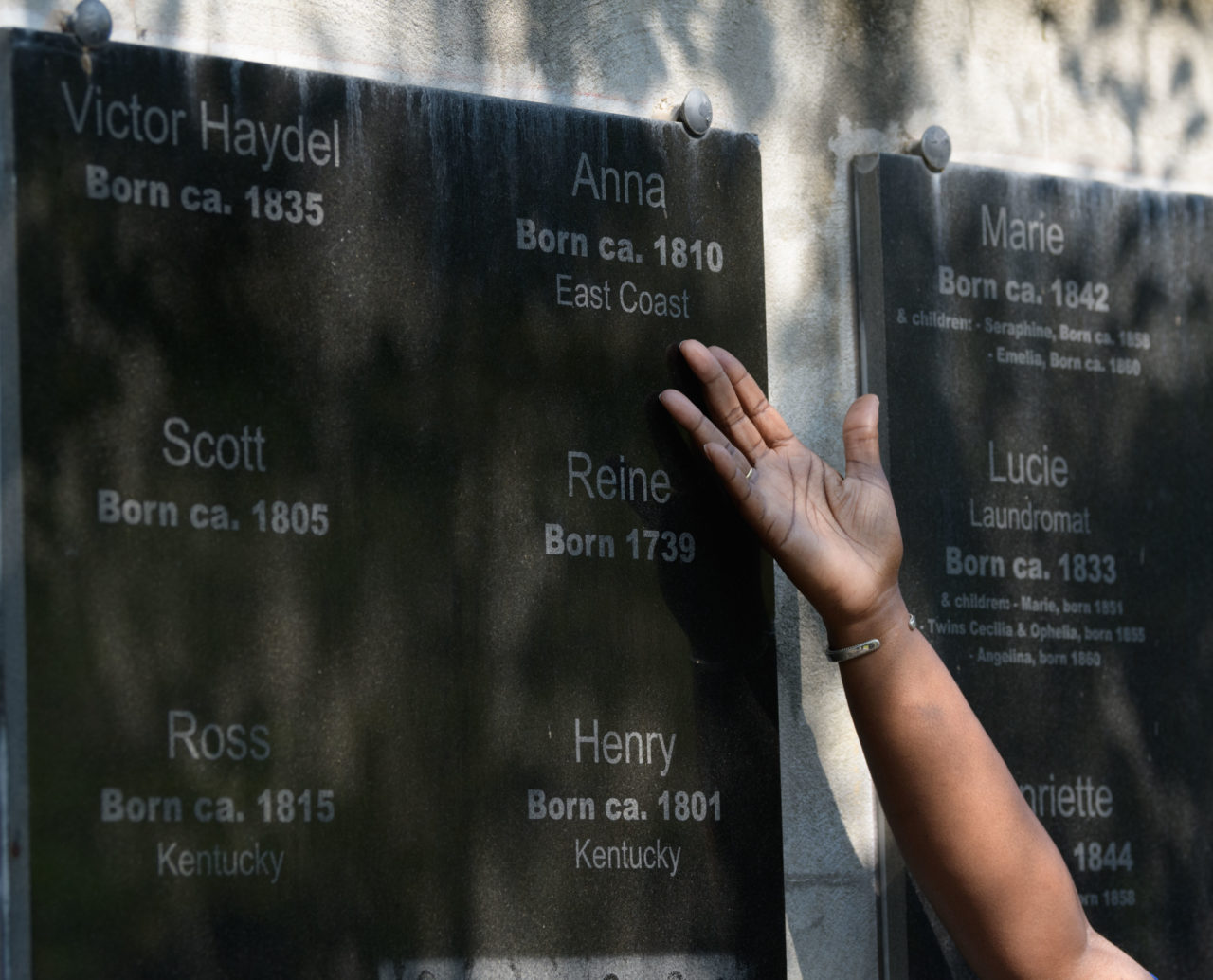With flags flying and chants of “On to New Orleans, Freedom or Death,” marching in tandem to the sound of African drumbeats, New York-based visual artist Dread Scott plans to lead more than 500 reenactors of the 1811 German Coast Slave Uprising in period costume with sugarcane knives, sickles, sabers, muskets and horseback riders from LaPlace to Kenner on Nov. 8 and 9.
“The Slave Rebellion Reenactment project is about freedom and emancipation not about slavery,” Scott said. “It actually is about people who had a bold and audacious vision to seize all of Orleans Territory and end slavery in the region.”
The 1811 uprising is named after the German settlers who built sugarcane plantations along the Mississippi River in St. John and St. Charles parishes with the sugarcane being harvested and processed by slave labor.
Harriet Baptiste, a tour guide at the Whitney Plantation in Wallace, Louisiana in St. John the Baptist Parish, tells tourists that the uprising was led by slave driver Charles Deslondes. Baptiste said Deslondes was known as a particularly harsh driver and he was charged with disciplining, driving and hunting down other slaves, but his position also made for perfect cover to plan an insurrection as he was one the few slaves that was allowed to be armed.
On the night of Jan. 8, 1811, Deslondes and other slaves attacked plantation owner Manuel Andry, wounding him and killing his son, at what is known as Woodland Plantation in LaPlace. Taking uniforms and arms from the militia supplies Andry had stored, Deslondes began raiding other plantations along River Road. Ten plantations were visited, increasing the size of the group to an estimated 500 people. The uprising is the largest recorded slave rebellion in United States history. The then governor of Orleans Territory, William C. C. Claiborne, took the extraordinary action of shutting down all the bars in New Orleans as plantation owners and other residents fled into the city.
“The Slave Rebellion Reenactment project is about freedom and emancipation not about slavery”
Deslondes was purported to be half-Haitian, but there is no historical evidence he came from Haiti. Nonetheless he was said to have been inspired by the successful slave revolution in Haiti from 1791-1804 that eventually ousted Napoleon’s French forces. Because of Napoleon’s lack of success in quelling the slave revolt, he decided to sell the rest of the French colonies to the U.S. in 1803 as the Louisiana Purchase.
With the recent history of a large-scale slave revolt still fresh on the minds of the Territory of Orleans plantation holders, troops were assembled to push back against the growing march for freedom and a confrontation in Rivertown, present day Kenner, caused the group to retreat to the Bonnet Carré area in present-day Norco where many of the raiding group were captured.
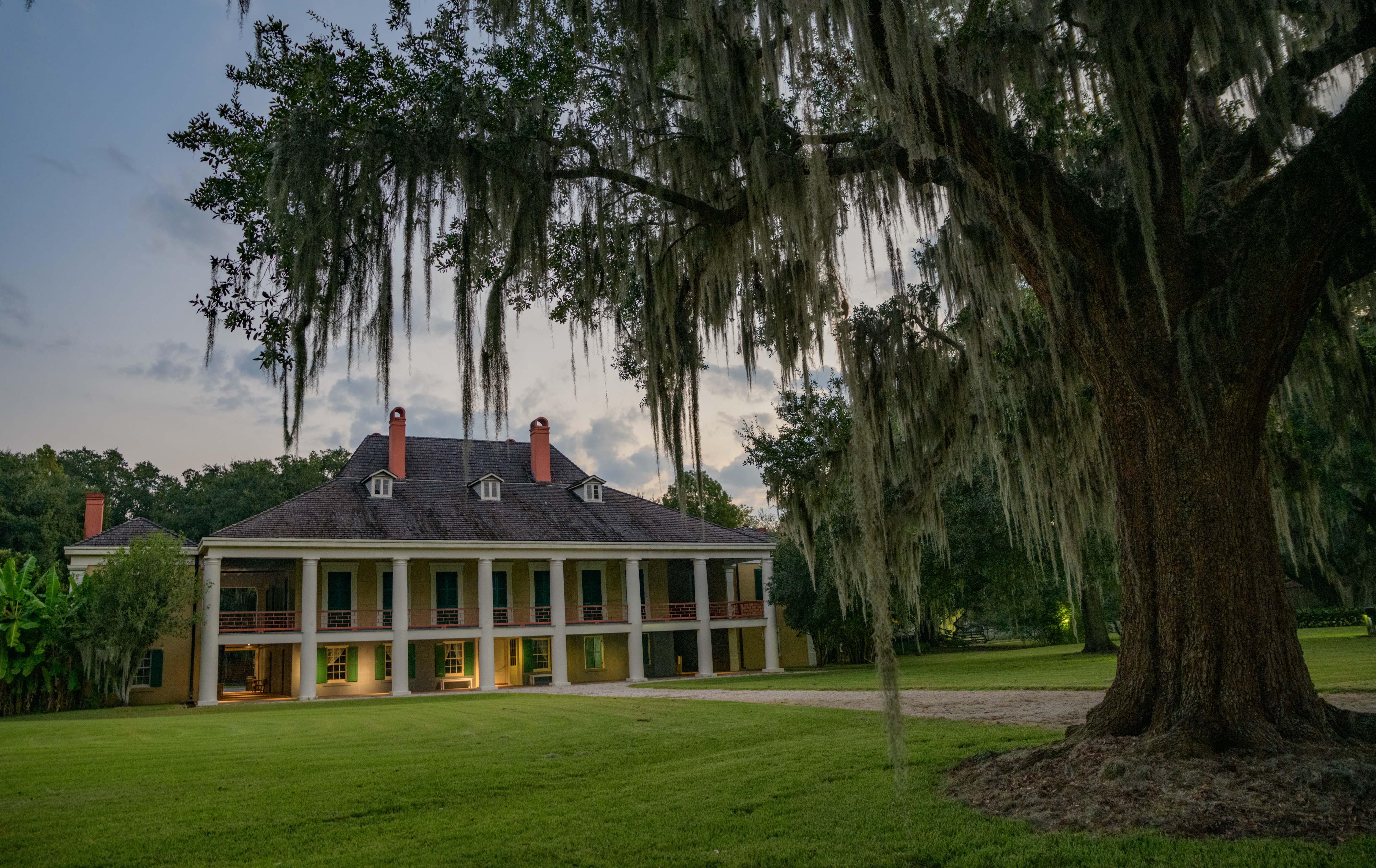
Trials at Destrehan Plantation lead to 45 rebels being put to death with their heads placed on spikes on the Mississippi River levee as a warning to future rebellions. One document from a later trial in Orleans Parish details the sentence of the slave Daniel Garret: “And he shall be hung at the usual place in the City of New Orleans… and his head shall be severed from his body and exposed at one of the lower gates of the city.”
These beheadings were considered a particularly brutal response and may have led to the fear of talking about the uprising in the years afterward.
At the Whitney Plantation, there is a stark memorial to the uprising with severed heads on poles rendered by artist Woodrow Nash. Joy Banner is the locally-raised director of communications at the Whitney plantation and she spoke of the importance of art.
“Slavery is very intangible for us because as free people we don’t understand what enslavement is, even when you know as much as you can read about it,” she said. “It’s very hard for us to imagine what it’s like to not have control over our own bodies and over our own destinies. [With an art piece] we can Illustrate to people and bring them more into that moment.”
The plantation tour also features sculptures of child slaves.
“[The sculptures of the children] especially have a big impact because when you think about slavery and your children are considered, you know our most innocent suffered,” she said. “Some visitors bring their children and when they have a real child standing next to the statue of an enslaved child. It really brings it home. I think that’s the purpose of the art.”
“How do you think we feel about not being able to tell our story?”
Slave Rebellion community outreach coordinator Karen Kaia Livers, a New Orleans native, reenactor, and casting director whose credits include HBO’s “Treme,” spoke at the Our Lady of Grace Church, a historically black Catholic church in Reserve, Louisiana to explain the project to people interested in taking part in the reenactment.
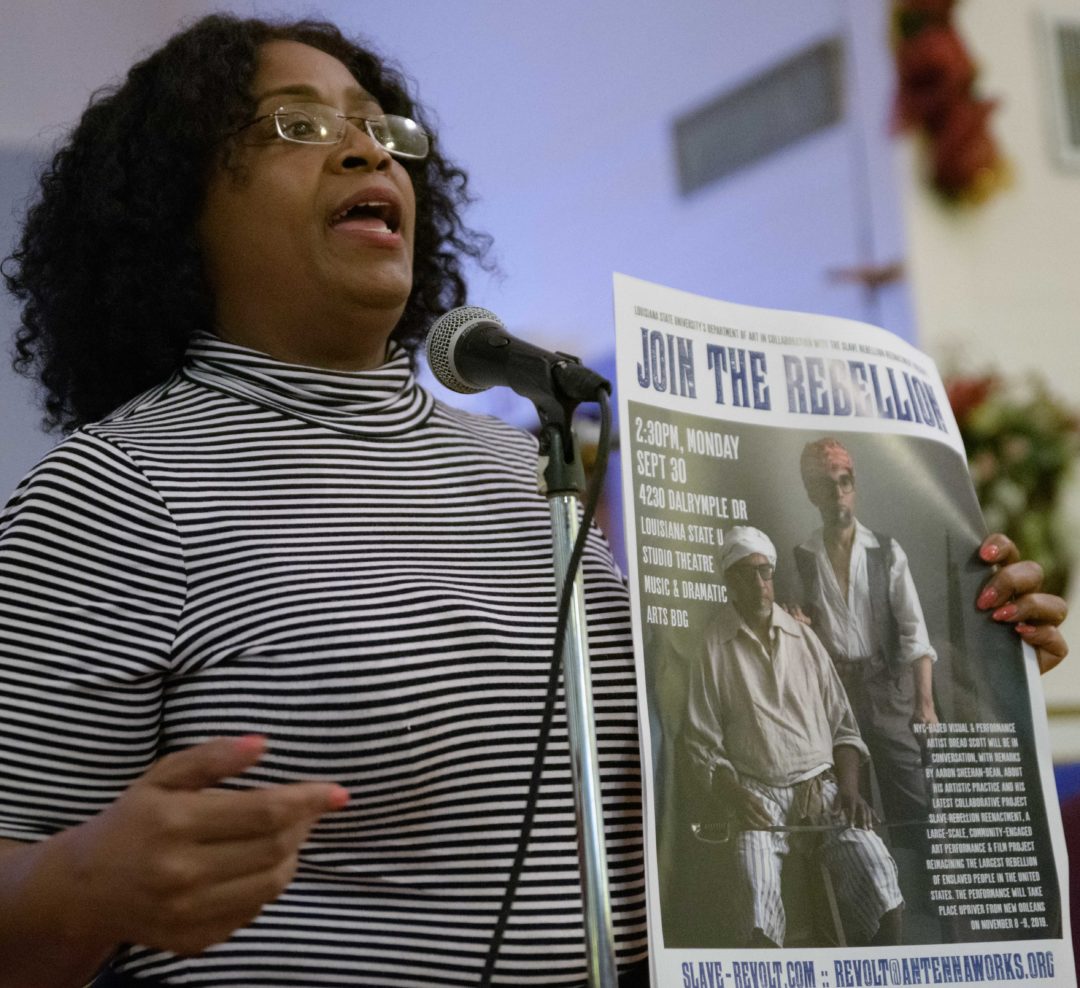
“I never believed in art for art’s sake because as black people, we didn’t have time just to have art for fun,” she said. “It could be fun, but it needs to have a message connected to it. That’s how I was trained. And that’s the type of art that I believe.”
Livers expressed worry about how history is taught in schools today.
“I am concerned with the school system in America because they’re changing the definition of slavery,” she said. “They don’t want to talk about it because it’s so harsh and it hurts. Well, how do you think we feel about not being able to tell our story?”
In a 2018 survey of high school students by the Teaching Tolerance Project, researchers found only 8 percent of U.S. high school seniors can identify slavery as the central cause of the Civil War. The survey also found many history textbooks lacking in the depth on slavery’s influence. Most people, including Dread Scott, until recently have never heard of the 1811 uprising.
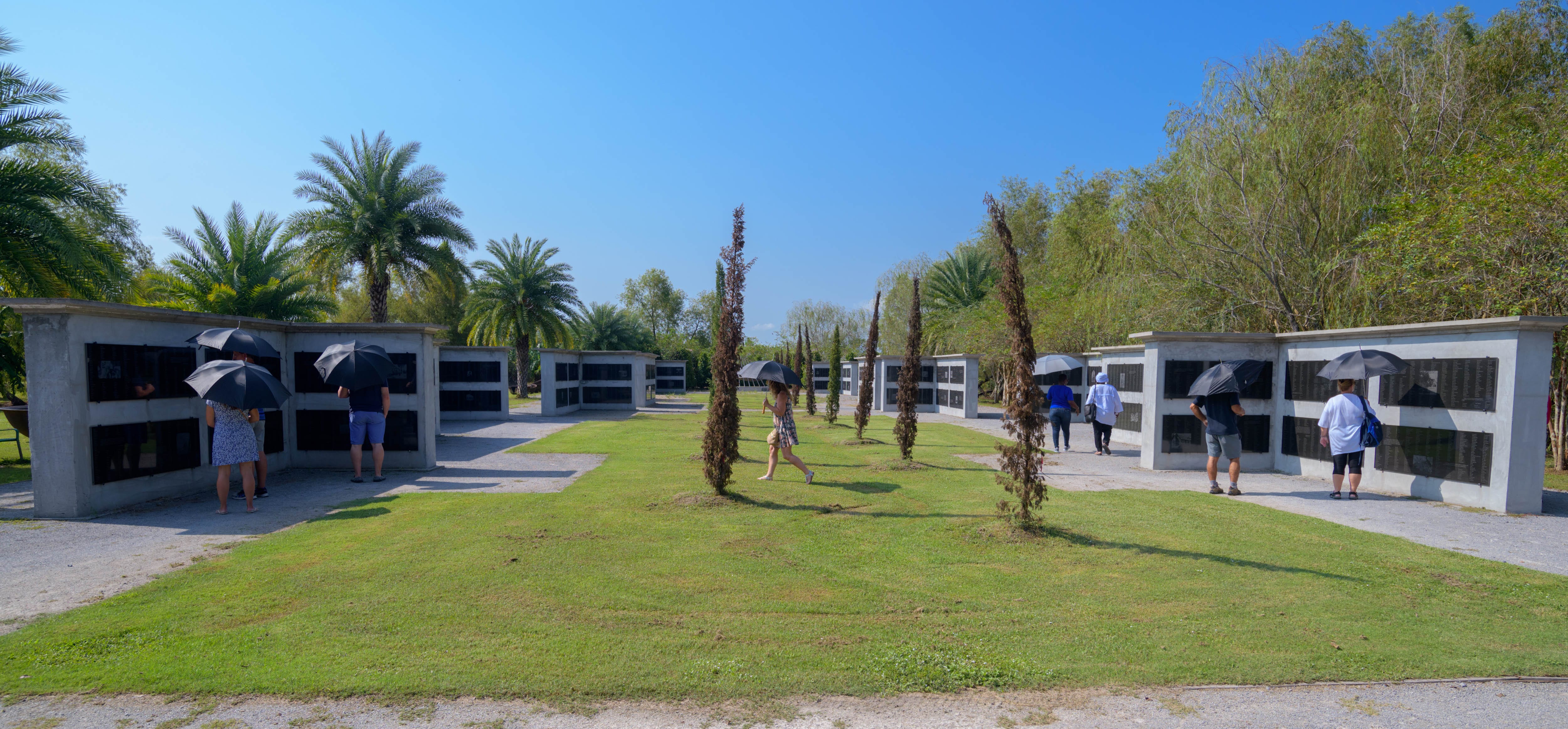
The Tolerance project’s authors stated, “It’s clear that the United States is still struggling with how to talk about the history of slavery and its aftermath.”
Banner, who attended a Catholic school in Ascension Parish, said she was taught that the Civil War was a battle for states’ rights even though slavery was the central cause for secession. She said that the history focused more on people like Harriet Tubman who helped a small percentage escape slavery. Most slavery history in school had a redemptive quality that talked about white people assisting Tubman with the Underground Railroad.
“I think that comes from an unwillingness for people to actually go through and learn unpack the slavery system for what it was,” Banner said. “I mean, it’s violence, it’s rape, it’s murder, it’s torture and this is coming from primary sources and not us exaggerating it. This is what masters and slave owners were sitting around talking about in detail.”
Few students in the survey know that Thirteenth Amendment ended slavery and when Abraham Lincoln pushed for passage of the amendment as the 16th President of the U.S. he was a rarity as a president who had never owned slaves. Twelve of the first U.S. presidents owned slaves and enslavers dominated the Supreme Court and both houses of Congress for a substantial time period of the country’s history.
Chief Justice Roger Taney previously owned slaves and wrote the majority opinion in the infamous 1857 Dred Scott case. The Supreme Court denied the right of Scott, a slave, to sue for his freedom after Scott was moved by his owner into free territory outside of a slave state. It also ruled that blacks, whether slave or free, were not U.S. citizens. At least three other justices that sided with Taney had also owned slaves and a fifth justice grew up as the son of a plantation owner with slaves.
Artist Dread Scott, who was born Scott Taylor, took his professional name in part as a reference to this Supreme Court decision.
At a recent guest lecture at LSU in Baton Rouge, Scott pointed out that slavery is mentioned by the line “three-fifths of all other Persons” in the fourth paragraph of Article 1 on the first page of the U.S. Constitution.
In another artwork, Scott burns the Constitution in an homage to the destruction of a million-dollar Han Dynasty vase by Chinese artist Ai Weiwei, with the point being that artists and society need to break with the past. Scott began his lecture saying, “I am a visual artist, and I make revolutionary art to propel history forward.”
“It really touches me that this is a project is a vehicle in which people can reassess their history and their position in the world today.”
As an art student in Chicago, Scott also explored the symbolism of the flag with his piece “What is the Proper Way to Display a US Flag?” That piece invited people to stand on a flag and leave their comments in a book about what the flag and artwork meant to them.
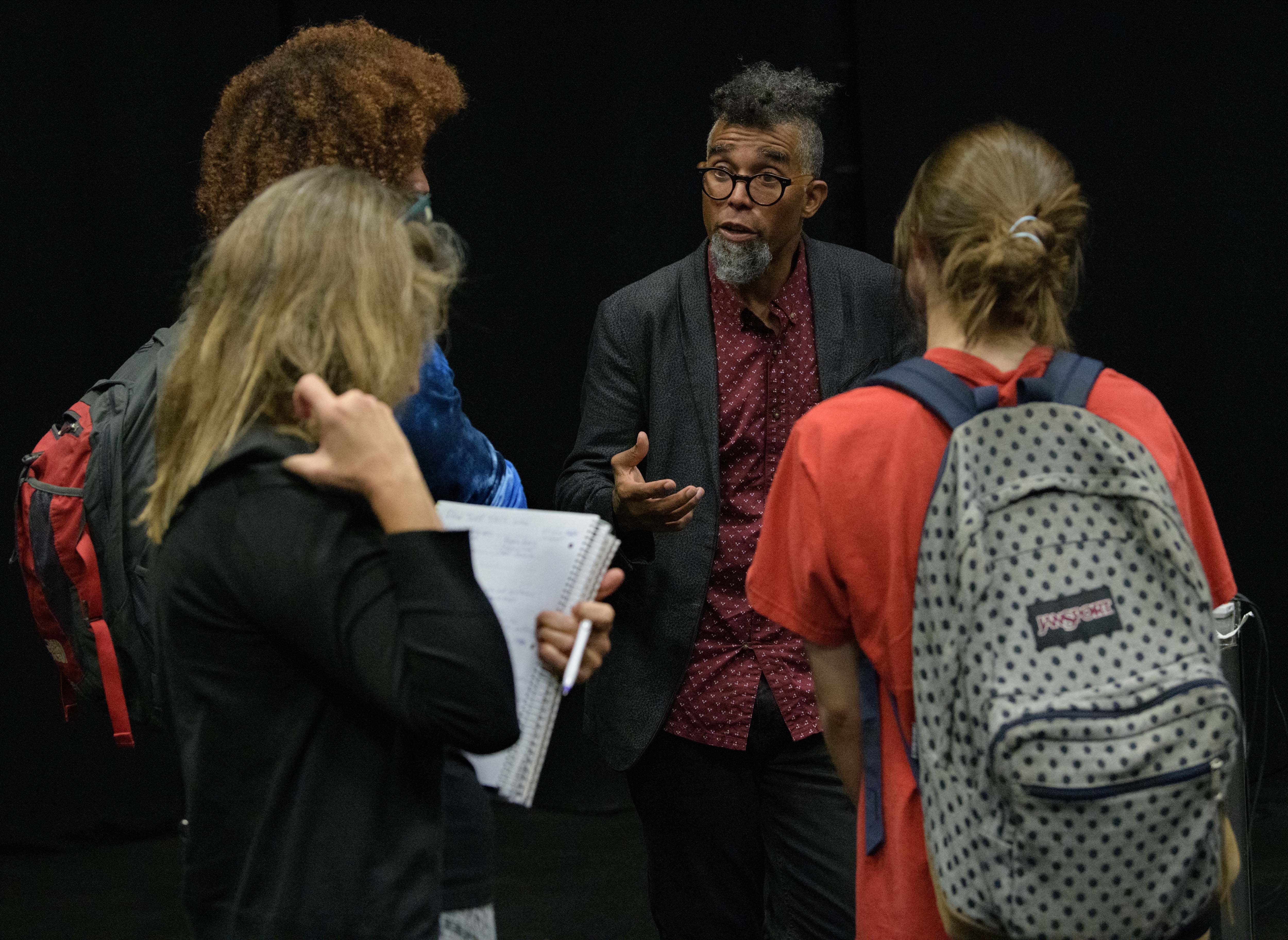
“This artwork allowed all sorts people to people to enter in a conversation about what the flag and what U.S. patriotism represented,” he said. “[But it also] brought the voices of people who felt they were victims of society into the debate.”
According to the Teaching Tolerance project, a fundamental lack of understanding of slavery’s economic, political, and social impact in the United States, puts students at a disadvantage in understanding what came after including the civil rights movement, or the recent removal of Civil War statues in New Orleans and across the country, or the current Black Lives Matter movement.
Whereas Whitney Plantation focuses on slavery, many of the other plantations in the area do not focus on or mention slavery as part of the main tours. Even locals don’t always know about their families’ history on the plantations. After slavery ended many freed slaves remained as sharecroppers and continued to work on the plantation. Some slave quarters were occupied as homes into the 1970s and 80s. When she interviewed for a job at Whitney Plantation, tour guide Harriet Baptiste was surprised to find a picture of her grandfather working the sugarcane fields at that plantation after slavery had ended.
“People are reevaluating black people in American society today in a way that they haven’t in about 40 years and it’s not just black people, it’s people who wish to be free from this oppressive society,” Scott said. “It really touches me that this is a project is a vehicle in which people can reassess their history and their position in the world today. And I find a strength in being able to move collectively with other people to make an artwork that can talk about these big questions.”
To learn more about Dread Scott’s project go to : www.slave-revolt.com
The Whitney Plantation: www.whitneyplantation.com
The Original Our Lady of Grace Church Sanctuary tours in Reserve: historicriverlands.com

